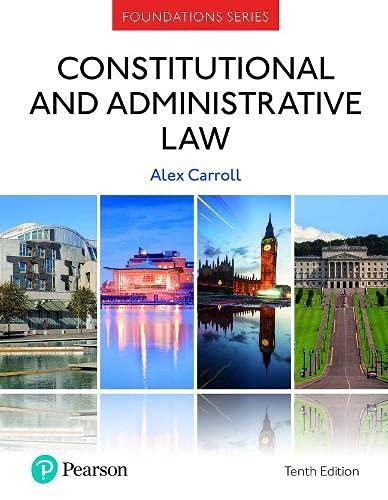Question
. South American countries are well-established markets for European and North American traders in used re-treaded tyres. Large numbers of used tyres are re-treaded in
. South American countries are well-established markets for European and North American traders in used re-treaded tyres. Large numbers of used tyres are re-treaded in factories around Europe and North America, then shipped to South American countries. Re-treaded tyres provide the same performance as new tyres, but are considerably cheaper. Unsurprisingly, the demand for re-treaded tyres out-strips demand for new tyres across South America. However, the Brazilian government is fed up with re-treaded tyres. These tyres have a shorter lifespan than a new tyre. Once the tread on an imported re-treaded tyre is worn, the tyre cannot be re-used again and are waste. Brazilian environmentalists have argued that the country is effectively importing waste from Europe and North America. Further, the increasing number of now defunct re-treaded tyres are a particularly problematic type of waste. As the tyres break down they release toxins into the food and water chain. Environmental studies around the waste sites prove that the toxins are already contributing to native species' dwindling populations. Furthermore, in the tropical climate of Brazil, stockpiled rubber tyres are ideal breeding grounds for mosquitoes. Brazilian health officials have warned of imminent epidemics of mosquito borne diseases, such as dengue fever and malaria, as a consequence of the increasing number of waste tyres. 7 Consequently, the Brazilian government has decided to restrict the importation of re-treaded tyres. However, pursuant to MERCOSUR, a regional free trade agreement between Argentina, Brazil, Paraguay and Uruguay, Brazil will still permit imports of limited numbers of re-treaded tyres from other MERCOSUR countries. These permitted imports are subject to an overall quota of not more than 5000 tyres per country per year and the circumstances in which the imports will be permitted are largely limited to where the tyres are already fixed to a used vehicle destined for sale in Brazil. Are Brazil's measures likely to be consistent with its treaty obligations under the WTO?
Step by Step Solution
There are 3 Steps involved in it
Step: 1

Get Instant Access to Expert-Tailored Solutions
See step-by-step solutions with expert insights and AI powered tools for academic success
Step: 2

Step: 3

Ace Your Homework with AI
Get the answers you need in no time with our AI-driven, step-by-step assistance
Get Started


